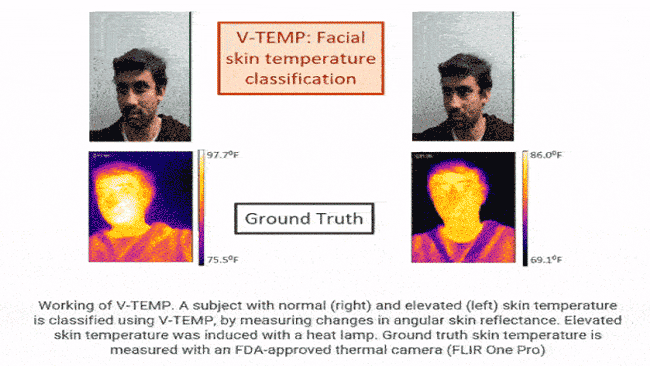In this work, we propose a non-contact video-based approach that detects when an individual’s skin temperature is elevated beyond the normal range. The detection of elevated skin temperature is crucial for diagnosing infections or abnormal health conditions. Traditionally, contact thermometers or non-contact infrared sensors have been used for this purpose. However, with the widespread availability of video devices such as smartphones and computers, we have developed a binary classification approach called Video-based TEMPerature (V-TEMP) to classify individuals as having either non-elevated or elevated skin temperature.
Our approach capitalizes on the correlation between skin temperature and the angular reflectance distribution of light. By empirically distinguishing between skin at normal temperature and skin at elevated temperature, we establish the uniqueness of this correlation. Firstly, we uncover a distinction in the angular reflectance distribution of light between skin-like and non-skin-like materials. Secondly, we investigate the consistency of the angular reflectance distribution of light in materials that share optical properties similar to human skin.
To validate the effectiveness of V-TEMP, we assess its performance in detecting elevated skin temperature in two scenarios. Firstly, we evaluate subject videos recorded in controlled laboratory environments, ensuring the accuracy and reliability of our method under controlled conditions. Secondly, we test its efficacy in outside-the-lab environments, demonstrating its robustness in real-world settings.
V-TEMP offers two significant advantages. Firstly, it is a non-contact approach, eliminating the risk of infection associated with physical contact. Secondly, its scalability is evident due to the widespread availability of video recording devices. By leveraging existing technology, our method provides a convenient and accessible means of detecting elevated skin temperature, which can be invaluable for early detection and monitoring of various health conditions.

